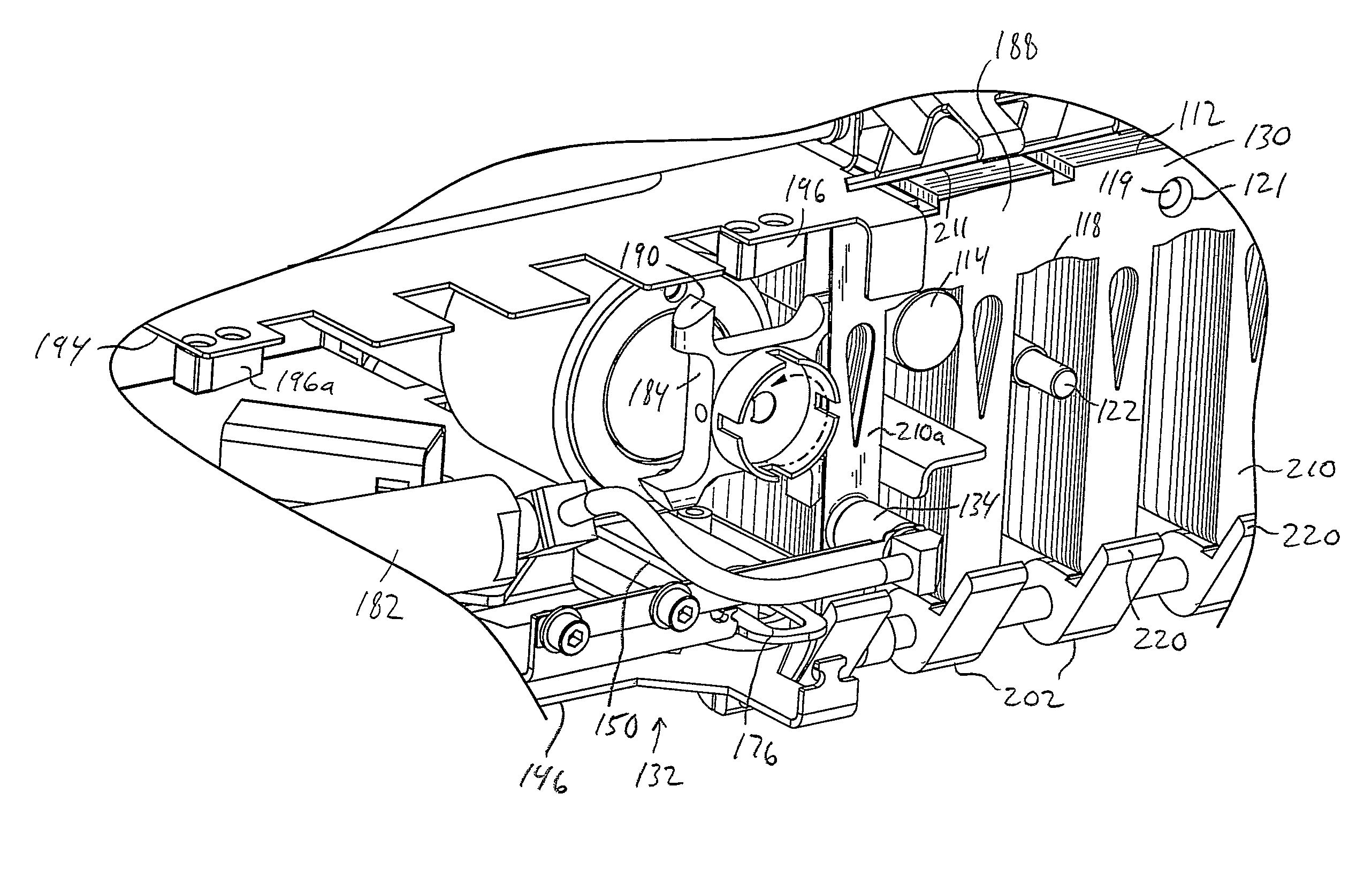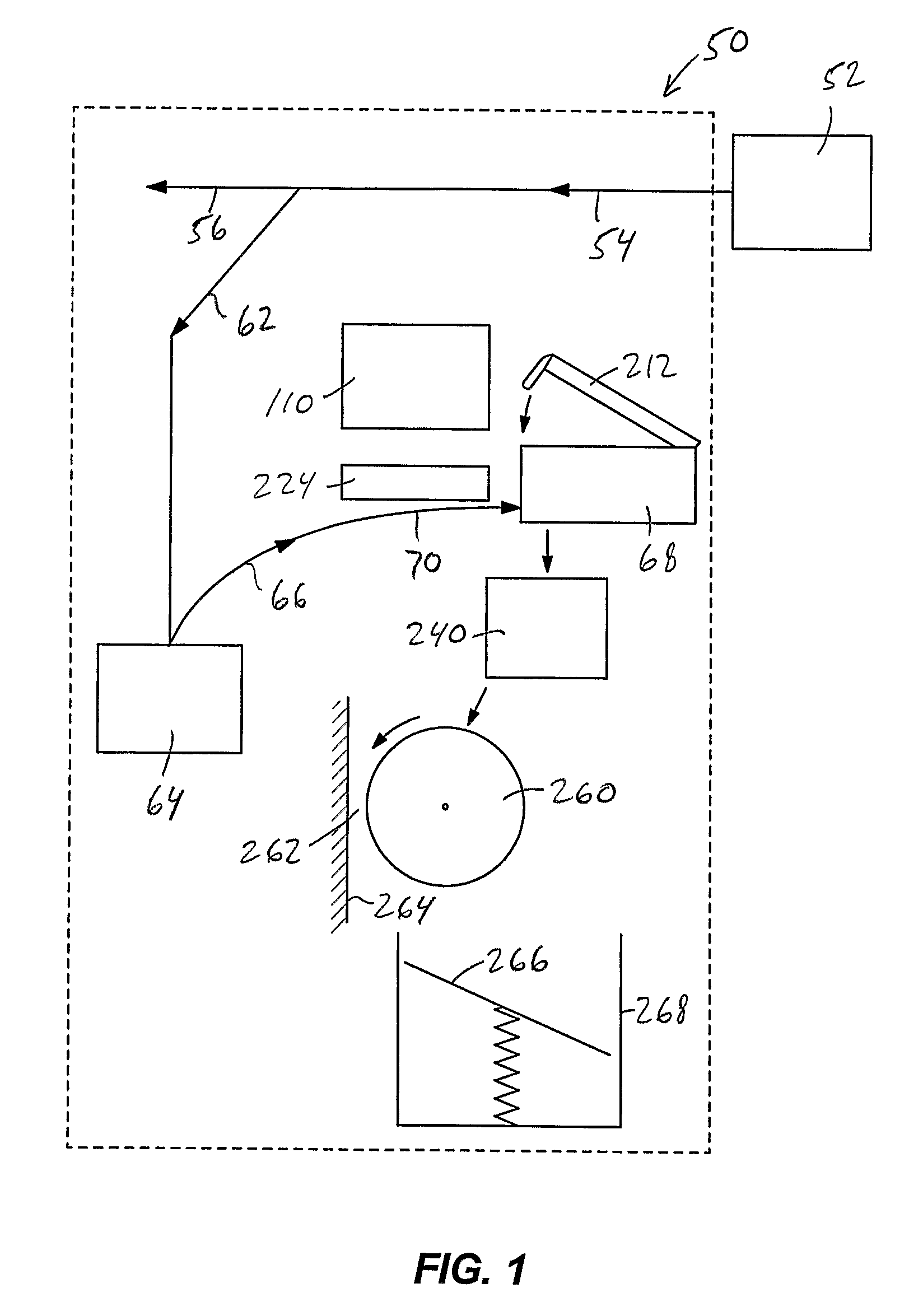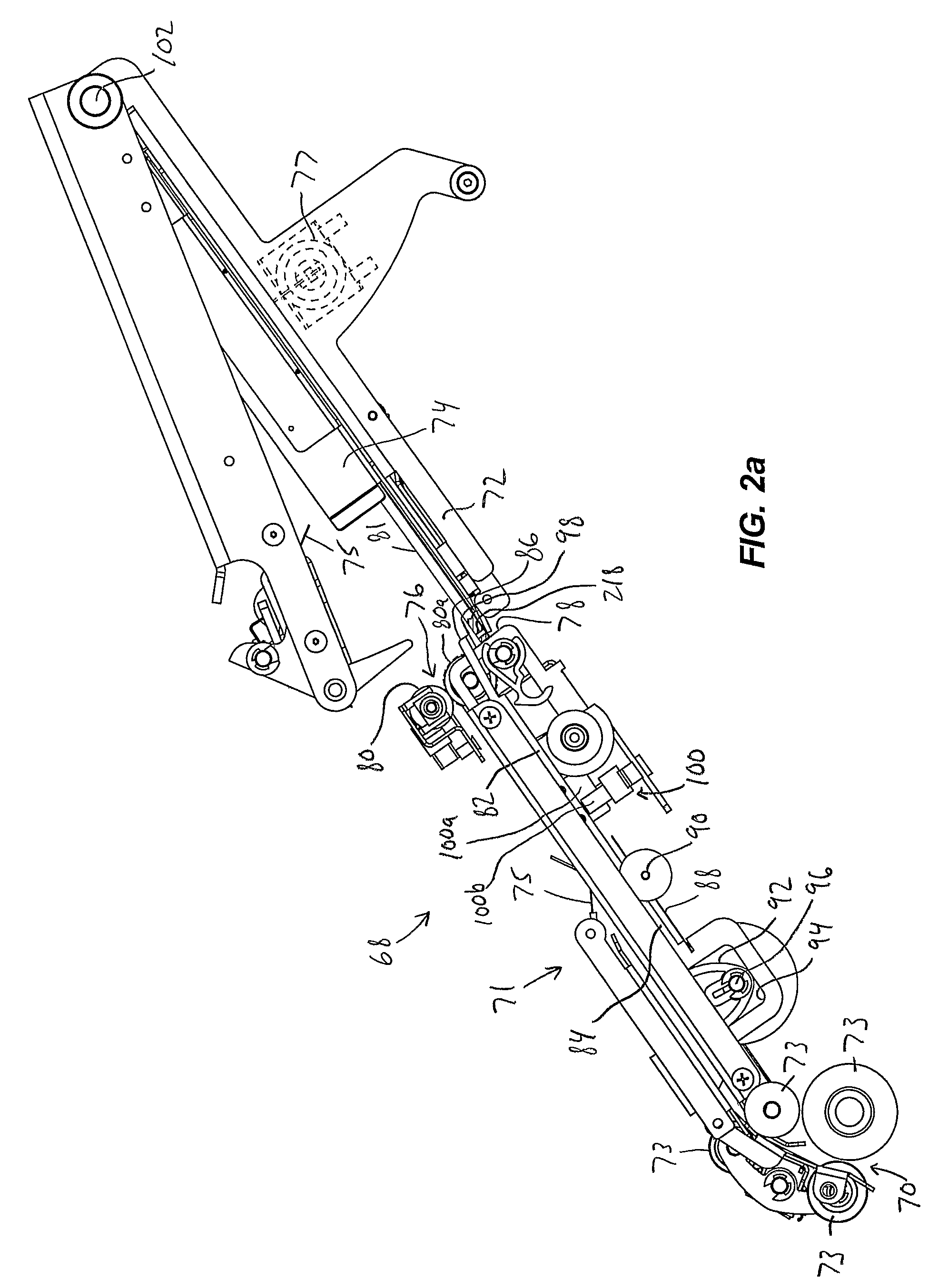Typically, mechanically bound books are created using either relatively small, inexpensive machines that require a significant amount of labor to create each book, or large, expensive machines that require much less labor per book.
As the number of books to be assembled increases, however, the manpower required is significant when utilizing such small, inexpensive machines.
While these machines may be capable of creating the twenty to fifty books in as little as two to five minutes, the size and cost of automated machines can be prohibitive to smaller or occasional users.
Further, it is often
time consuming for operators to set up such automated machines or to modify machines to change from one size or color of binding element to another.
The specialized training required to operate and set-up automated binding machines further limits benefits available to general office users.
As the ability to design and print documents has become widespread, the amount of time required to create a document has dropped dramatically.
Unfortunately, however, for a majority of the people creating these documents, the ability to do mechanical binding has not improved significantly over the past two decades.
The ability to mechanically bind documents has not kept pace with the ability to create, edit and print the documents due in large part to fundamental problems with the currently available binding styles.
While each of these binding arrangements has its advantages, each suffers from various limitations particular to the type of binding.
Due to the structure of such binding devices, which typically include elongated spines and fingers, the binding devices commonly become entangled when stored in a group.
Detangling the binding elements in order to assemble and individual element into a stack of sheets or lay the element into a binding
machine can be a tedious and potentially time-consuming process.
Further, this tendency to become entangled may complicate or prevent the use of such binding devices in automated binding processes or machines wherein an automated feed is desirable.
The time required to manually feed binding elements into a machine would be prohibitive to efficient, high-volume automated binding operations.
Moreover, maintaining an inventory of such binding elements in an automated machine can require a large volume of space within the machine, necessitating a relatively large
footprint.
This problem would be compounded in an automated
binding process, requiring a large element storage space within the machine and / or frequent element changes within the machine to accommodate varied book sizes.
Thus, a book formed in this manner cannot be opened to edit the contents and then reengaged.
Moreover, such a bound book cannot be readily folded back on itself, or lie open in a surface.
Such binding elements are not generally adaptable to highly automated binding machines.
While an element
magazine of fifty to one hundred binding elements would seem ideal for general office use, the bulky nature of most currently available binding elements would generally make magazines required to accommodate such a large number of binding elements impractical.
Loose-leaf binders, for example, are the poor from this standpoint inasmuch as the integral covers and ring assemblies take up considerable space.
Even if alternatingly stacked, this requires a considerable volume.
Packaging binding elements for
automation presents significant additional challenges.
The durability of the binding element itself may limit the methods by which binding elements are provided to an automated machine.
Metal spiral and
double loop wire, for example, are constructed of a thin metallic wire, which is relatively easy to deform, either before binding, which will make binding difficult or impossible, or after binding, which may impair page turning or damage the sheets themselves.
Inasmuch as
metal spiral and
double loop wire binding elements are particularly susceptible to damage prior to binding, packaging of the binding element must protect the element for delivery to the binding machine.
Further, such coil formers introduce additional costs, as well as reliability and
operator training issues.
The structure of virtually all loose binding elements, i.e. the elongated spine and fingers, makes them highly prone to tangling unless the elements are controlled by the
magazine.
As a result, if the packaging method does not control the elements, the binding machine must have sufficient mechanism to disentangle the elements.
Such detangling mechanisms would presumably be prohibitively complex, as well as expensive and unreliable.
Beyond the fact that the spools tend to be quite large (15-inch
diameter spool that is 15 inches wide has a volume of 2650 cubic inches), this method adds cost to the element packaging, creates a
waste product and adds an extra step during element
changeover.
In practice, this
system can be problematic, however, inasmuch as the
adhesive may be sensitive to time and environmental factors.
If the
adhesive does not adequately retain the elements, the elements will either disconnect from the paper completely, or twist or rotate on the paper, resulting in waste elements and / or causing
jams within the binding machine.
This
system typically has the obvious disadvantages of high packaging cost and generally poor packing efficiency.
While VeloBind® has proven to be a successful packaging and
automation solution, a document bound with VeloBind® type elements cannot “lay flat”, i.e., remain opened flat without the user holding the pages.
This characteristic limits VeloBind's® potential with users seeking a pure “lay flat” bound book arrangement.
Further, the VeloBind® element does not allow pages to cleanly “
wrap around” behind the book after turning, a feature that allows the document to consume less space during use.
Dimensional stability of the binding elements themselves also significantly affects automated binding processes.
Many mechanical binding styles have inherent manufacturing variations or material properties that make it difficult to automate them successfully.
Within a given manufacturer's
double loop wire binding elements, standard manufacturing tolerances will also cause enough variation from box to box that the required over-travel is not necessarily consistent.
Unfortunately, however, it is very difficult to create an easy to set up, easy to change, reliable binding machine in view of such variations.
Pitch is a particular problem with double wire in that the spacing between successive finger loops is not necessarily constant.
This is also a problem for
metal spiral and plastic coil binding elements.
Plastic coils have an additional
disadvantage caused by their material properties.
This process tends to leave stresses in the binding element similar to that found in injection molded plastic pieces.
Due to the low
melt temperature of vinyl, these elevated temperatures can potentially be encountered during normal transportation, storage and usage.
This is particularly problematic in the summer when the elements may be in a
truck for several days during the transportation stage.
These dimensional changes make feeding the element through the perforations more difficult and can impair the crimping process used to prevent the element from rotating out of the sheets after binding.
Thus, each of the binding elements currently known and available in the industry presents certain disadvantages, either in the packaging of the elements prior to binding, the
automation of the
binding process in connection with the elements, or in the qualities of a book bound by the elements.
Even traditional loose-leaf binders are bulky and not readily, compactly packaged.
They are cumbersome during use, and take up considerably more space than the documents they enclose.
Further, even if the cover of a loose-leaf binder can
wrap around behind the binder, the individual pages certainly cannot.
 Login to View More
Login to View More  Login to View More
Login to View More 


